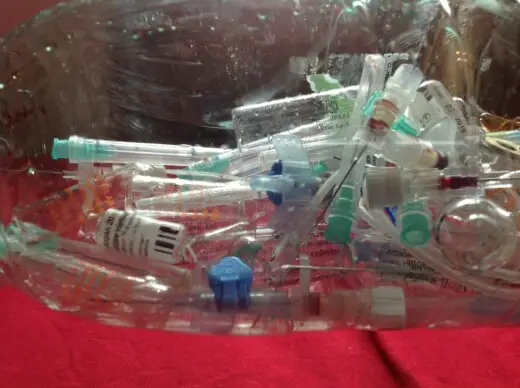Medical waste disposal effective method guide, Online property renewal design advice
Which is the most effective method of medical waste disposal?
8 January 2023
Any object that emerges in association with bodily fluids is widely categorized as medical waste. Any tangible garbage produced during the diagnosis, management, or immunization of people is specifically referred to. Previously, in healthcare situations, this kind of garbage was gathered in specific buckets and plastic containers before being discarded like regular garbage. However, it was immediately discovered that this technique might transmit viruses and infections and perhaps trigger epidemics. So if you want to see most effective method of medical waste disposal then MedWaste Management is the best for these all.
Equipment, injections, and IV devices that comprise any human blood or body liquid are now properly removed using the red hazardous material boxes and sacks that may be found in hospitals and doctor’s clinics. Paper towels, swabs, mittens, injections without pins, sutures or bandages containing minute quantities of dry blood or liquid, and other supplies used in medical treatment are also considered to be medical waste. Syringes with pins or other dangerous things that can be cut through a plastic wrapper need a specific plastic bin for further security.
When it comes to treating hazardous material, chemical implications are significant, but so are the huge variety of garbage types present in the establishments that generally create this type of trash.
You are accountable for controlling all part of your trash as a creator of medical waste, from the time it is created to how it is disposed of in the end. If you don’t, you risk breaking the Resource Conservation and Recovery Act (RCRA), which carries stiff charges and punishments.
What is medical waste?
One of the largest daily issues experienced by healthcare professionals is the management of medical waste. Other issues including HIPAA, epidemiology, prospective legal suit, and state and local legislation frequently make it more difficult. We’re looking at the fundamental ideas around medical waste since at MedPro Waste Removal we want to assist providers in becoming better producers.
Any type of pathogenic (or possibly infectious) garbage is considered medical waste. This term covers garbage produced by health centers such as clinics, hospitals, medical clinics, labs, and institutions for medical research.
This comprises:
- Anything that has been bloodied (gloves, gauze, gowns, etc.)
- procedure-generated organs from either humans or animals
- infectious illness and agent samples
- any garbage generated by patients who have contagious illnesses in their quarters
- unused vaccinations.
Blood and other biological liquids, as well as other pollutants, can be found in medical waste. It was characterized as waste produced during clinical research, screening, diagnosis, immunization or medication of either humans or animals under the Medical Waste Monitoring Act of 1988. Bandages, gloves, abandoned sharp objects like injections or scalpels, wipes, and tissue are a few examples.
Medical Waste Types
Medical waste can be of various forms. Some of them are risky, while others aren’t. However, the standards for management might differ depending on the sort of trash. How the garbage is discharged might still depend on its quantity.
You understand the significance of appropriate medical trash removal if you oversee a hospital, research center, pharmacy, blood bank, dentist’s office, hospital ward, or another sort of healthcare organization in the United States. Understanding the kind of garbage you currently have on hand is the first step in determining your management needs.
Chemical Waste
Chemical waste is common in medical services and comprises:
- Ammonia, phthalates, glycol ethers, glutaraldehyde, and formaldehyde are examples of detergents and sanitizers.
- Chemicals, oxidizing agents, formaldehyde, methanol, hydroxides, and isopropanol are common laboratory compounds.
- Herbicides such as pyrethrins, glyphosate, and carbaryl
- removal of medical waste
- Commercial paints containing organic volatiles
- Ingredients include PVCs, dioxin, and phthalates that are detected in IV pouches and piping
- Emergency rooms, sitting room chairs, and clinic seclusion drapes all contain volatile organic combustion chemicals.
Laboratory Waste
Laboratory equipment frequently has chemical trash, as do clinics and academic labs. Drugs, mixes and liquids, contaminated needles, biohazards, and cleaning agents can all be disposed of with laboratory waste. This trash could be solid, fluid, or pressurized gas.
Some lab waste, such as ethyl alcohol, xylene, and formalin, can be reused, boiled, or purified while other trash is treated using different therapeutic techniques.
Pharmaceutical Waste
Depending on its ignitability, conductivity, acidity, and volatility, certain pharmaceutical trash is regarded as hazardous. A wide range of medications, from adrenaline to nitroglycerin and several chemotherapeutic treatments, are classified as toxic chemicals.
Chemotherapy Waste
Prohibited chemicals like morphine and hydrocodone are examples of chemotherapeutic waste, as are residual materials such as IV bags, piping, vials, and needles. Medicines that do not satisfy the RCRA’s criteria for being deemed “empty,” as well as materials utilized in the situation of a spill or excessively polluted personal safety equipment, are examples of bulk chemotherapeutic waste.
Dental Waste
Mercury, dental amalgams used for restorations, and x-ray processing reagents are a few instances of dental waste. Lead is also utilized in dental offices as x-ray shielding aprons, x-ray packet foil, and x-ray film storage containers.
Biomedical Waste
Hazardous biological waste is a problem in a variety of medical settings, including dental offices and hospitals. Needles disposal as well as blood-soaked cotton, needles, and bandages are typical.
Body liquids, infectious waste, body parts, tissues, tumors, blood transfusions, and human blood are some further examples of biohazardous waste. To prevent hazardous infections, it’s crucial to handle these possibly contagious materials carefully.
Non-Hazardous Medical Waste
The World Health Organization estimates that 85% of medical waste is not considered harmful. Plastic containers, clean glass and plastic, paper and cardboard, and office supplies are a few examples of non-hazardous medical waste. As soon as they are fully empty, aerosol containers are not regarded as hazardous materials in California.
Non-Medical Waste
Even though some waste materials aren’t only present in hospitals and medical settings, you can nevertheless find them frequently in doctor’s offices, labs, hospitals, and research labs. You must still get rid of this waste appropriately, which may entail making a plan for how to handle things like kitchen scraps, waste products, and common dangers like insecticides, cleaning agents, and electronics.
Medical Waste Management Methods
The safety of any garbage must be established prior to its disposal in landfills. Before being discarded, hazardous material can be sterilized using a number of remediation technologies, rendering it less dangerous.
Medical waste is treated in order to prevent poisonous materials, hazardous waste, or other objects from seeping into the ground or surrounding water sources at dumps and endangering the ecosystem and the general public.
Autoclaving
This procedure is especially efficient because it is far less expensive than alternative approaches and poses no dangers to the individual’s health. Even while autoclaving can’t be used to dispose of all biological waste, over 90% of it is cleaned this way before being dumped in a landfill.
Sterilization is accomplished by autoclaving using steam. Although autoclaving is an effective method for sterilizing microorganisms trash, hazardous substances and other types of garbage should not be sterilized using this method.
This method of burning biohazardous garbage accounts for about 90% of it. High temperatures and pressure are applied to a specialized box where the substance is stored to be ultimately incinerated. Alternately, it can be zapped in a microwave on steroids to achieve the same result.
Chemical Disinfection
Chemical trash and fluid garbage are typically the only things that need decontamination. A frequent ingredient used in this procedure is chlorine. Whether this is a good option for sterilizing depends on the kinds of bacteria in the trash and how polluted the item is.
Microwaving
Waste is sterilized by irradiative sterilization, which employs the microwave technique. Chopped trash is combined with moisture. The garbage is then burned to destroy all biological components.
Using powerful instruments to microwave dangerous medical trash is another technique to make it non-toxic. This technique, like autoclaving, allows for later standard waste disposal or combustion of the trash.
Incineration
Hazardous and medical garbage are frequently disposed of by incineration. In this procedure, medical waste incinerators heat up to 2,000 degrees Fahrenheit. The burning of minimal chemotherapeutic residue is authorized by California law.
Medical Waste Disposal And Management Services
To ensure that you adhere to all waste removal regulations, it is essential to understand the appropriate waste management techniques for every type of healthcare trash that your institution produces.
To prevent harmful elements and products from having catastrophic effects, extremely precise removal techniques are needed for hazardous materials, some restricted compounds, and even dental industrial effluent. Based on the amount, even an identical sort of garbage may demand specific removal techniques.
The U.S. Drug Enforcement Agency emphasizes the importance of keeping in mind that, even when removing identical material, your specific institution’s removal processes may vary from those of another (DEA).
Because of this, it’s crucial to collaborate with a reputable and knowledgeable medical waste disposal service to guarantee that your types of waste are rid of effectively and in accordance with your special needs.
When selecting a company for the treatment and removal of medical waste, seek a business that:
- Uses monitoring and laboratory techniques to identify pollutants
- Depending on the quantity of your garbage provides both fast and planned collections to match your demands.
- Takes care of the documentation and data needed to manage your garbage.
- Carries garbage to establishments for handling hazardous material.
Additionally, it is crucial that the business you select has a wealth of expertise in managing medical garbage. Commercial sellers for the removal of toxic garbage are numerous. Some toxic waste removal businesses lack medical waste disposal expertise.
To properly define, classify, and transfer your plastic waste while minimizing any potential hazards, you must use the greatest competence and care in the highly specialized sector of medical waste management.
Comments on this Medical waste disposal effective method article are welcome.
Building Designs
Edinburgh Property Developments
Architecture Developments in the Central Belt
Springside Quarter Fountainbridge
Buildings / photos for the Medical waste disposal effective method page welcome




